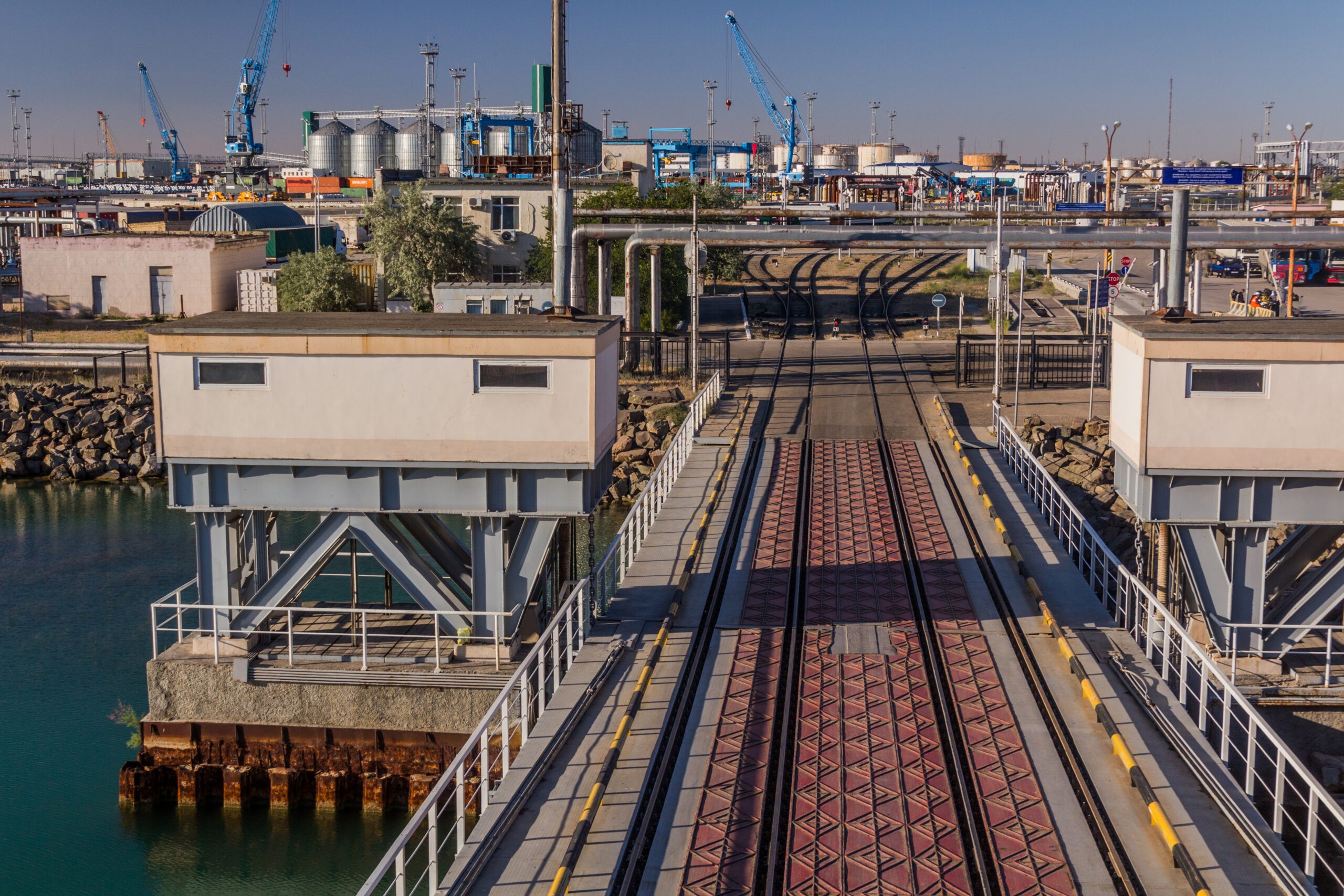Kazakhstan’s strategic location as the gateway from China’s western border to Europe makes it a linchpin in the Trans-Caspian International Trade Corridor (TITR). The TITR starts from China, transits the whole width of Kazakhstan, crosses the Caspian Sea to Azerbaijan and Georgia, eventually reaching Europe via Turkey or the Black Sea. Although it is sometimes also called the “Middle Corridor”, this latter term more properly refers to the TITR segment running from Kazakhstan to the South Caucasus. Started over six years ago as an autonomous bilateral initiative between Kazakhstan and Azerbaijan to bolster cross-Caspian trade, the Middle Corridor project antedates the TITR.
The TITR, as well as the more limited Middle Corridor, have drawn considerable support from international financial institutions (IFIs) like the Asian Development Bank, European Bank for Reconstruction and Development and the World Bank, as well as national development organisations including the U.S. Agency for International Development. The network of the TITR association now counts eleven participating states (Azerbaijan, Belarus, China, Estonia, Georgia, Kazakhstan, Latvia, Lithuania, Poland, Turkey and Ukraine) as well as 25 transport and logistics companies including ports, vessels, railways and terminals.
Kazakhstan’s role and leadership
Kazakhstan, given its geographic centrality in the region, may rightly be considered the keystone of the TITR in Central Asia, just as Azerbaijan is its keystone in the South Caucasus. Under the leadership of President Kassym-Jomart Tokayev, the country has taken significant steps towards realising the potential of this important trade route, cementing its role as a crucial Eurasian transit hub. One example demonstrating Kazakhstan’s key role is the country’s targeting of a substantial increase in cargo traffic along the TITR, with an ambitious goal of 500,000 containers per year by 2030.
The roadmap between Azerbaijan and Kazakhstan for the development of the Middle Corridor across the Caspian Sea is one component of Tokayev’s vision. It complements the broader economic objectives that Tokayev has established for his country’s progress, but more importantly, his active engagement with IFIs and neighbouring countries underscores his commitment to greater collaborative development and regional integration.
Understanding the challenges and the impact for key countries
The Middle Corridor saw a 33 per cent surge in container traffic in 2022, but this has fallen significantly in 2023. That is because the dynamic growth revealed limitations such as issues at border crossings, transhipments and co-ordination, all producing lengthy transport delays. To address these challenges, Kazakhstan—along with Azerbaijan and Georgia—has initiated upgrades to the corridor. In November 2022, the three countries signed a roadmap that outlined priority actions and investments for optimising the corridor’s efficiency and increasing its capacity.
The TITR diversifies trade routes and reduces the dependence of countries in Central Asia and South Caucasus on Russian imports. Opening up new markets in the Middle East and North Africa (and eventually in South and Southeast Asia) will accelerate economic growth by promoting the production of more complex and value-added products. A World Bank study forecasts a 30 per cent increase in trade along the route, with Kazakhstan’s exports playing a significant role. It expects that the combined total trade volume of the three countries (Azerbaijan, Georgia and Kazakhstan) with the EU will increase by 28 per cent.
Furthermore, the World Bank’s new approach to the TITR regards it not just as a trade route but also as an “economic corridor” that can connect with the hinterlands of the countries that it traverses. This strategy has the potential for fostering the development of small and medium-sized enterprises, thereby creating a more robust middle class and ensuring political stability and legitimacy. This vision for the corridor includes the need for real-time visibility and faster information sharing, focussing on connectivity and equipment acquisition, especially in railway infrastructure.
The project’s influence on other Central Asian states
At the same time, the idea for a corridor connecting Tajikistan, Uzbekistan and Turkmenistan and linking in Iran has been discussed in international conferences. The former three have recently signed agreements on developing international transport corridors. These agreements specifically aim to develop land and rail routes; they would provide Tajikistan, via Turkmenistan with access to the Caspian Sea corridors and onward to Europe. An alternative plan is for this corridor to enter Iran, from where it would hypothetically reach Europe via Turkey. This variant, however, would require significant capital investment from yet unidentified sources.
China has expressed general interest in both branches of the Tajikistan-Turkmenistan corridor, targeting European markets especially through a free economic zone (FEZ) established by Tajikistan on its border. This reflects more broadly the Central Asian states’ recognition of the potential for developing efficient and cost-effective transportation and logistics sectors to stimulate economic activity while fostering social and political cohesion. As such, while not directly inspired by President Tokayev’s initiatives for the TITR, it may be said to have been influenced by it.
Conclusion
Kazakhstan’s keystone role in the TITR’s development will likely be seen, in retrospect, as marking a strategic reorientation in Eurasian trade. This initiative, highlighting the nation’s geopolitical significance as a Central Asian hub, is crucial for enhancing not only the region’s economic diversification but also the overall connectivity of inner Asia and the South Caucasus as a whole. In addition, it sets a precedent for neighbouring countries like Tajikistan and Turkmenistan, which are now exploring similar co-operative projects in trade infrastructure. Such developments, arguably led by Kazakhstan’s example, underscore a broader regional shift towards establishing the more autonomous and versatile trade networks that would be critical for Central Asia’s economic development and political stability.



